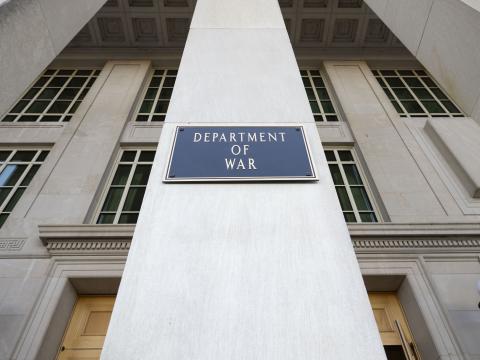Disruptive by Design: AI in the Ranks: Investing in Joint Development Teams
As software eats the world, artificial intelligence (AI) will replace work that requires traditional knowledge.
As software eats the world, artificial intelligence (AI) will replace work that requires traditional knowledge. The stakes are high in the AI arms races in both the commercial and military worlds. AI promises to improve predictive analytics of dynamic systems, identify inefficiencies and recommend improvements, and in general, make processes more intelligent. The Defense Department recognizes these competitive benefits, and many early military adopters race to develop in-house solutions.
At the enterprise level, long-term development solutions require well-thought-out organizational structures and personnel management. AI done well looks simple, but behind effective solutions resides a complicated host of infrastructure and software management needs. The development, operation and maintenance of data pipelines that ingest, classify, transform, train and retrain AI models require skilled and dedicated personnel.
Rather than invent multiple personnel wheels for the cart carrying AI projects to their finish lines, leaders should develop a joint vision for integrated AI development teams comprised of service members, Defense Department civilians and contractors. These teams can deliver increased continuity, agility and standardization.
Perhaps the most important benefit of an integrated AI workforce is continuity. The regular rotation of active-duty developers creates high turnover effects. Onboarding, upskilling and transitioning diminish productivity and continuity. Data pipelines require knowledge about specific analytic tools and data management systems. They also require an understanding of the organization and its idiosyncratic data needs.
Envision a cadre of civilians managing contracted development efforts with service members interacting at the organizational level to gather requirements, develop priorities and advocate for support needs. Additionally, if service members rotate between organizations that share AI development constructs, they could share lessons learned while broadening their experience, providing continuity within local units through civilian deputies and program managers while increasing development continuity. Hiring additional contractors offers a relatively easy solution to increase agility when development requirements emerge. When new skills or more manpower are required, the department will benefit from partnerships with organizations capable of rapidly onboarding additional developers.
Furthermore, the department may wish to rush specific initiatives or mini Manhattan Project-style development efforts. Achieving large-scale AI development in-house requires a contract vehicle with the flexibility to scale up developers when needed. Asking individual organizations to manage each contract in a piecemeal manner could leave gaps in efficiency and increase costs. Should the Joint Artificial Intelligence Center create an encompassing line of funding for contractor support, it could cut costs while affording increased oversight.
New approaches could emerge for training the next generation of AI developers, and joint community leaders should create a standardized template and requirement for integrated development teams. By accepting a common vision for a development team, each service can consider what personnel could or should work in that environment. They can then map out a typical career for those personnel, leading to new requirements for education and training.
The time has come for a joint community vision to develop, manage and share AI developer talent. Just as each service takes advantage of other’s schools and training centers, so too should we develop AI centers of excellence to train enlisted members, warrant officers, officers and civilians. We should also consider a career progression model for those engaging in AI data pipelines beyond the operations research/systems analysis community.
The rise of AI in the ranks may prove the difference in the next fight. Some see AI applications providing the means to overmatch potential adversaries. However, to deliver on the promise, a new generation of AI developers and leaders is needed. It will not be enough to cobble this team together solely from active-duty personnel. Nor should the department outsource the requirement. A better solution would include service members, civilian employees and contractors. To enlist AI in the ranks, the joint community must invest in integrated AI development teams.
Lt. Col. Ryan Kenny, USA, created an online forum to foster discussions on emerging technologies at www.militarycommunicators.org. The views expressed here are his alone and do not represent the views and opinions of the Defense Department, U.S. Army or other organizations with which he has had an affiliation.




Comments